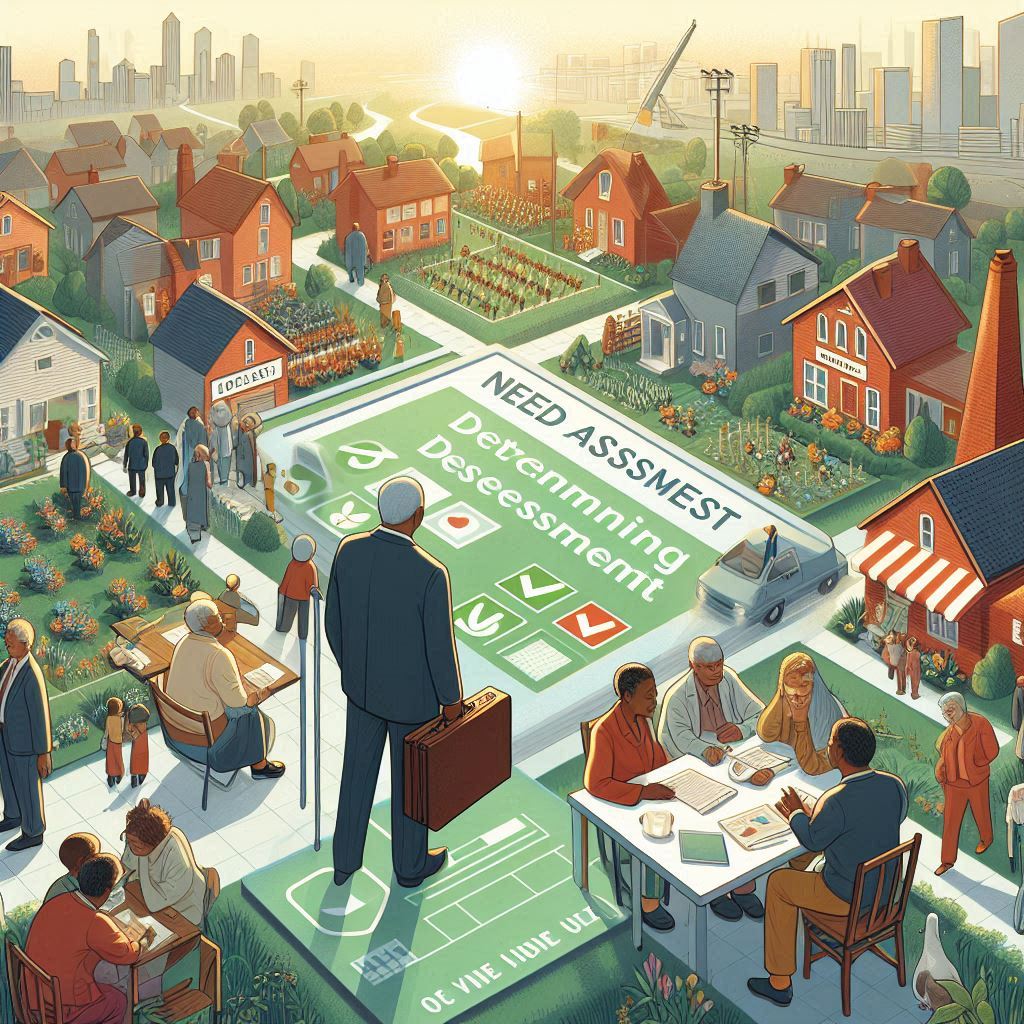
A needs assessment is a process for determining needs and priorities for a particular population cohort. A needs assessment can also be a process for identifying gaps between current conditions and desired conditions.
➤ NEED is something (necessary) without which we cannot survive. Eg: air, food, water etc.
➤WANT is used for something in short terms. Eg: I want to buy this inns right now. Eg: I want a cheeseburger right now.
➤DESIRE, a higher level of want or you can say used for long terms. Eg-l desire that my family is happy and successful -My desire is to go for world tour.

Why need Assessment is Important ?
✓Needs assessments are an important part of any planning process.
✓They help to gain a comprehensive picture of the health problems in a community to guide planning and delivery of health interventions for that community.
✓There are a number of elements involved in a needs assessment process such as data collection, community consultation, data analysis,communication and consensus building.
Under taking need assessment
➤There are two main stages in a needs assessment:
1) Identifying the priority health issue
2) Analysis of the priority health issue
Framework for need Assessment.
1. Consultation
FROM Need Assessment .
2. Data collection.
3. Presentation on finding.
4. Determining priorities.
5. Literature review.
6. Describe the target group.
7. Explore the health problem.
8. Analysis the factor contributing to the health the problem.
9. Reasess the strengthen community resources.

Step 1: Consultation
➤This step involves going out and talking to the people living and working in the community to gain some insight into the issues and concerns that are important to those who may receive a particular service or initiative.
+ When undertaking this consultation it is important to find out:
*What the main health problems or concerns are?
*What health workers think?
*What groups are experiencing these problems?

Step 2: Data collections
• There are many existing sources of information you can choose from depending on what you are researching.
• Collecting data provides critical information on the make-up and composition of your target population, the population’s health and use of health services.
• After reviewing existing data you will be in a position to make decisions about any additional data which you may need to collect yourself.Step
3: Presentation Of Findings
• Anyone who has been involved in the planning and development of a program should be provided with regular updates on the progress of the program.
• This may include groups who contributed information and advice to your project or organizations, groups and individuals who may play a key role in the success of the intervention.
• It is very important to involve the community in all phases of the program including planning. development and implementation to open up the process for wider scrutiny.
• The participation process will be significantly enhanced if the data is presented clearly and in a fashion likely to generate comments and analysis step.
4: Determining Priorities
• Unfortunately there are never enough resources to develop programs to address all of the issues identified.
• Decisions will need to be made to determine which issues are prioritized.
• Prioritizing issues can sometimes mean undertaking another round of consultation with the community and key stakeholders to ensure the issue that is prioritized meets the needs of the target group.
• If you anticipate a number of different issues might emerging from an initial consultation process, incorporating strategies to priorities these issues during the initial process would be recommended.

Step 5: Literature Review
•The next step is to undertake a full literature review by researching existing sources of information such as published papers, evaluation reports and case studies.
•Reviewing the existing literature will help you determine:
➤Factors known to be contribute to the problem or issue.
➤The types of interventions that have already been tried and tested, and their success rates.
•This will help you to identify what has worked well and what hasn’t. It will assist you to determine if your own intervention or program will be effective in addressing the identified issue.
Step 6: Describe the Target
• As part of your needs assessment it is important to describe the target group for your intervention in more detail.
• This should include demographic characteristics such as age, gender, ethnic composition, identified disadvantaged group (if appropriate), and also such factors such as place of residence and education level.
• Specifying this group in detail is also important so that health workers in other areas can compare your group with their own population before they decide to duplicate aspects of your intervention.

Step 7: Explore the Health
• The research you under took in steps 12 and 5 will help to inform this step.
• Before you set out to design an intervention or strategy for your own group, you will need to explore the factors that seem to be contributing to the problem such as limited knowledge of services available, potential stigma associated with the issue, access to services in the area and so on.
• This information will significantly assist you to determine the focus and delivery style for your intervention or program.
8: Analyze Factors contribution to Health
By this step you should be able to list all the contributing factors that might be leading to the health.
*Lack of available services.
*Limited knowledge about local services.
.*Barriers to accessing services.
*Cost of services available.
*Low self-esteem.
*Stigma associated with the issue.
What you now have to do is sort these factors into a logical order that t will help tease out the causal pathways leading to the problem.

Step 9: Reassess and Strengthen Community
• When you are planning a new intervention or duplicating an existing program, you should first be aware of existing resources and programs available in the local community.
• Many new health interventions should be planned in partnership with the community and associated resources that are already available.
• Keep in mind that too often the focus of needs assessments is on community deficits rather than community strengths.
• Instead of focusing simply on needs, you should also make a careful assessment of community strengths and capacities.
• You may also take this opportunity to enlist the support and involvement of different organizations and members of your target group for the planning of your intervention or program if they are not already part of the process.
Outcomes of the Needs Assessment
By the end of the needs assessment you should have:
➤An agreement on a high priority health problem.
➤An indication of the magnitude of the health problem.
➤A target group with a set of clearly identified, characteristics.
➤A set of contributing factors for the health problem sorted into categories.
➤An indication of community resources to be involved in the health planning process.
➤Commitment from a range of stakeholders to bring about change.

Conclusion:
A needs assessment helps identify what people truly need to improve their health.
A clear health issue everyone agree is important.
How big the problem is.
Who is affected (target group) and their main traits.
What causes the problem, organized into categories.
Local resources that can support solutions.
Stakeholders committed to making positive changes.
Do you know want to read Periodontal Disease: Understanding, Prevention, and Treatment
This process follows the principles of teaching and learning by focusing on what people desire



